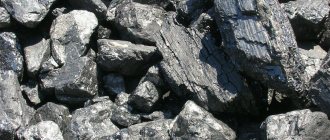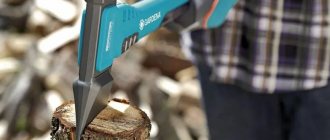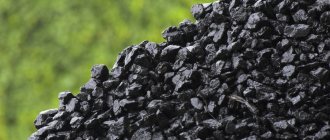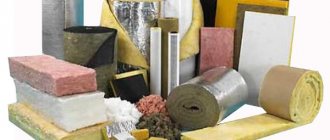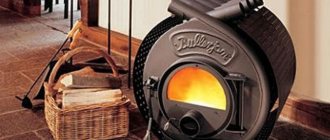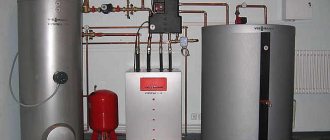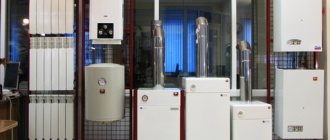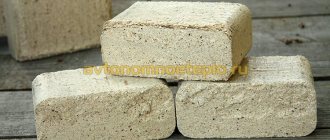Coal is divided into grades, groups and subgroups within the industrial classification. It is based on the properties of minerals to react differently to high temperatures. It also takes into account the stage of metamorphism or coalification. The higher it is, the more mature the mineral is. Well carbonized grades produce more heat, less smoke and ash.
In 1988, the classification by brand was agreed upon with the International Codification System.
In this section we will explain in detail:
- What brands of coal exist?
- According to what characteristics coal is divided into grades
- How are brands, groups, subgroups, classes, categories, types and subtypes of coal related?
Types of coal for barbecue
In retail outlets you can find charcoal in containers of different weights from various manufacturers.
Visually, all coal looks exactly the same. But in fact, its properties depend on the type of wood. When cooking over a fire, it is recommended to choose the following types of coal:
Birch
Lights up easily and provides even, long-lasting heat.
Does not emit toxic substances and does not impart any flavor to products. Average consumption per 1 kg of meat is 4 kg.
Oak
Does not emit harmful substances or unpleasant odors.
Gives a large amount of sustained heat. However, it does not light well.
Coconut
Coal from a nut shell. This is one of the best options for grilling meat. Coal flares up quickly, does not produce soot, and holds heat for a long time and evenly.
The only disadvantage of spit coal is its high cost.
Wood briquettes
This type of fuel is easier to ignite. To make briquettes, manufacturers use birch, oak, larch, and aspen chips.
The price is higher than coal. But the consumption is about 2 times less.
How to correctly calculate the bulk density of sand, coal, cement - Repair and construction
The bulk density of a material is determined by the ratio of the mass of the material to the volume it occupies. For coal, sand and cement it is expressed in kg/cubic meter. m. Bulk density refers to the volume of material that it occupies in an uncompacted state. They scooped it up with an excavator bucket, poured it in - here it is, “bulk” density.
Sand
The sand is not always clean, very often it is not washed or washed poorly, here you can only rely on the conscience of the supplier, and don’t forget to control the quality of the sand yourself, at least visually: how much debris is in the sand and whether there are eroded lumps of clay visible. Below is the bulk density for clean dry sand.
If the sand is wet, then the weight is 1 cubic meter. m of this material can be safely increased by 10-12%.
Bulk density for clean dry sand:
- Quarry sand: 1500 kg.
- River sand: 1600 kg.
- Quartz sand: 1700 kg.
You can approximately check the bulk density of sand as follows.
Weigh the empty bucket, then fill the bucket, pouring sand into it from a certain height, without compacting the sand in the bucket.
Weigh the bucket, then divide 1000 by the cubic capacity of the bucket and multiply the resulting number by the weight of the sand, excluding the weight of the bucket.
For example, a bucket is 12 liters, empty it weighs 1 kg, filled with sand 19 kg. We divide 1000:12=83.33 (the number of such buckets in 1 cubic meter by volume). 19-1=18 (weight of sand in the bucket). 18 x 83.33 = 1499.9 kg of this sand occupies a volume of 1 cubic meter. m.
Cement
The bulk density of cement of different brands (M200, M300, M400, M500) will be approximately the same; during caking, the bulk density increases significantly, and this happens quite quickly. For the convenience of mutual settlements, it is generally accepted that 1 cubic meter. m of high-quality cement weighs 1300 kg.
Although this is not entirely true: freshly produced cement of the M500 brand has a bulk density of 1100 kg / cubic meter. m, and compacted (but still quite usable) 1600 kg/cu. m.
You can check the bulk density of cement by analogy with sand.
Coal
With coal, everything is much more complicated, since the bulk density very much depends on the size of the fractions, but with coal it is difficult: the size ranges from large lumps to coal dust, and different brands of coal also weigh differently. The weight of coal of the same brand and size class, but from different coal basins, can also vary significantly.
The following classification of coal is used in the Russian Federation. Since here we are considering bulk density, I will not give the combustion temperature and other useful characteristics; I will only give the name of the brands and classification by size of the pieces.
Coal grades:
Brown (B), Long-flame (D), Gas (G), Fat (F), Gas fat (GZh), Coke (K), Coke fat (KZh), Coke second (K2), Low-caking (SS), Skinny ( T), Lean-sintered (OS), Anthracite (A).
Classification by size of pieces:
- More than 100 mm – P (slab),
- 50-100 mm – K (large),
- 25-50 mm – O (walnut),
- 13-25 mm – M (small),
- 6-13 mm – C (seed),
- 0-6 mm – W (piece).
Without classes: P (private), 0-300 mm - quarry, 0-200 mm - mine.
The name of coal is written as follows: brand comes first, size comes second.
Most often you come across classes mixed in size, for example DKOM (long-flame, large + nut + small, i.e. from 13 to 100 mm).
The data that I will give is quite average - just to have an idea, in general, since at the moment coal is sold in most cases by weight, not volume.
| Coal grade | Specific gravity of 1 cubic meter m (Weight of 1 cubic meter of material, assuming that it is a monolithic piece with a volume of 1 cubic meter) | Bulk weight of some common types (by size) of coal |
| Brown (B) | 1250-1500 kg/cu.m. m | BKO 680-720 kg/cu.m. m |
| Long flame (D) | 1280-1350 kg/cu.m. m | WPC about 800 kg/cu.m. m, DKOM about 700 kg/cu.m. m |
| Fat (F) | 1250-1300 kg/cu.m. m | GZhO about 800 kg/cu.m. m |
| Gas (G) | 1280-1330 kg/cu.m. m | GZhO about 800 kg/cu.m. m |
| Skinny (T) | 1310-1390 kg/cu.m. m | TR 1250-1300 kg/cu.m. m |
| Anthracite (A) | 1000-1150 kg/cu.m. m | AC about 800 kg/cu.m. m |
You can also check the bulk density, which you learned from the seller, by analogy with sand, but it is better to take a larger container to reduce the error. The error in the results will be noticeably greater than for bulk materials. To determine the density of coal, there is a whole GOST (54246-2010), but it is used for industrial volumes of coal.
Which coal should you not take?
If the package says “Charcoal”, the buyer may be in for an unpleasant surprise. Unscrupulous producers may place pine or aspen in bags instead of birch. This is lower quality wood that burns out quickly and does not produce the required amount of heat. Pine produces resin, which gives the meat an unpleasant bitter taste.
Birch charcoal
Pine charcoal
You can recognize a fake by the appearance of the coals. Birch has a rich black color and a shiny surface. The pine is matte and slightly grayish. It is better to choose packages in the store that clearly indicate “Birch charcoal”.
Carefully! You cannot cook shish kebab on coal. It contains toxic substances that penetrate into meat and can be harmful to health.
Criterias of choice
In addition to the type of wood, several other parameters need to be taken into account when selecting coal:
- Size of pieces. The pack, as a rule, contains pieces of medium and small sizes. On the one hand, this is a plus. After all, such coal flares up quickly, and you can start cooking earlier. But on the other hand, this is a disadvantage, since small pieces do not produce enough heat.
Expert opinion
Alexey Gavrilov
BBQ kitchen and equipment specialist
It is better to purchase coal consisting of large pieces. It is best to purchase packages that indicate the type of wood and the inscription “calibrated.” It means that the pieces are the same, even, and therefore will maintain a uniform temperature.
- Weight of packing. The higher it is, the lower the cost of coal.
- Best before date. Coal has a guaranteed shelf life. Expired products may be damp. Such coal will not burn, but will smolder and emit smoke. You won't be able to fry a shish kebab on it.
The best brands
When purchasing finished coal, you can rely on the name of the manufacturer. According to customer reviews, the following brands of coal are recognized:
- Supergrill. Birch charcoal in bags from 3 to 10 kg. The pieces are large and hold the heat for a long time. The packaging contains minimal dust content.
- Weber. High quality hardwood lump charcoal. Lights up easily and holds the heat well. During combustion, it does not form an unpleasant odor, and smoke does not emit dangerous compounds.
- Every day. A distinctive feature of the product of this brand is the combination of low price with acceptable quality. Coal flares up quickly and smolders for a long time. The disadvantage of the brand is the presence of too large pieces and a large amount of dust in the packaging.
- SevZapUgol. High-quality coal that does not produce soot. Lights up quickly. The disadvantage of the brand is a large amount of dust in the packaging.
- Palisad Camping. High quality charcoal with high heat output. Lights up easily and releases heat slowly.
Design of a coal boiler for heating a private house
In many models of such devices, in addition to those recommended by the manufacturer, the use of other types of fuel (wood, briquettes, peat) is allowed.
This equipment consists of the following functional elements:
- firebox - a chamber for burning fuel;
- ash pan - a container under the firebox for collecting combustion products;
- grate - a grate that prevents coal from falling into the ash pan;
- heat exchanger - a system in which coolant circulates;
- chimney - a channel for smoke removal;
- and temperature control systems .
Product rating
Weber Coal briquettes, 8 kg ★4.9
Weber briquettes are made from high quality compressed coal. The binding element in this fuel is corn starch. Thanks to its completely natural composition, this product has received the FSC Mix eco-label.
Buyers characterize these coal briquettes as very economical. If you can shut off the air supply in a grill or barbecue using dampers or a lid, the briquettes will go out and the pieces that are not completely burned can be reused.
From scratch, this fuel ignites in 20 minutes. An excellent option for those who often cook on the grill, grill or barbecue.
Average user rating: 4.9
Product characteristics
- Composition: hardwood, corn starch.
- Packaging: package.
- The weight of the fuel in the package is 8 kg.
- Burning time - 3 hours.
pros
- Can be reused.
- Holds the heat for a long time.
- No coal dust.
- The plastic bag with a zip-lock fastener is hermetically sealed and does not allow moisture to pass through, and can be stored for a long time.
Minuses
- High price.
What Yandex Market can offer us:
Grillkoff Birch charcoal for grilling “Standard”, 5 kg ★4.8
Classic birch coals produced under another popular brand. The product received mostly positive user reviews due to the high quality of the fuel, the low amount of dust in the packaging and the ability to maintain even heat for a long time.
The coals light up quickly and smolder evenly. A good option for those looking for high-quality fuel at an affordable price.
Average user rating: 4.8
Product characteristics
- Composition: birch.
- Packaging: package.
- The weight of the fuel in the package is 5 kg.
pros
- Large packaging.
- Lights up well.
- Little dust.
- Burns evenly.
- Holds heat well.
Minuses
- Pieces of different sizes, not calibrated. You may end up with a bag of very small pieces.
What Yandex Market can offer us:
SuperGrill Selected birch charcoal XXL, 8 kg ★4.8
This fuel is an excellent example of the optimal price-quality ratio. As customers note, SuperGrill XXL coals flare up quickly in any weather, especially if you light them in the starter.
Coal is consumed rather slowly; for some users, one package was enough for 6-7 grill kindlings.
Average user rating: 4.8
Product characteristics
- Composition: birch.
- Packaging: package.
- The weight of the fuel in the package is 8 kg.
pros
- Packaging with protective coating against moisture.
- It flares up quickly.
- Holds heat well.
- There are no too small pieces or dust.
- It lasts a long time.
Minuses
- Some users noted uneven fuel burning.
What Yandex Market can offer us:
CHAPTER HEAT charcoal briquettes 10 kg ★4.8
According to the manufacturer, 1 kg of these briquettes will replace 3 kg of conventional coal. This fuel is designed for 4-5 hours of uniform, stable smoldering.
High-quality raw materials are pressed at high temperatures without the use of chemical binders. Thanks to this, domestic briquettes GLAV ZHAR can be safely called an environmentally friendly product.
Many users call it an excellent alternative to more expensive Weber briquettes, since the manufacturer provides high quality fuel at an affordable price.
Average user rating: 4.8
Product characteristics
- Composition: compressed charcoal of category A1 (fine fraction).
- Packaging: package.
- The weight of the fuel in the package is 10 kg.
pros
- The coals burn quickly.
- The fuel holds heat for a long time.
- High quality briquettes, minimal amount of dust.
- Can be reused, the main thing is to thoroughly dry the coals after extinguishing with water.
Minuses
- Sometimes there are too large pieces of coal.
What Yandex Market can offer us:
SMART BBQ coconut charcoal, 2 kg ★4.6
The unique difference of this fuel lies not only in the raw materials chosen for the production of coal, but also in the packaging. A bamboo box can easily replace a starter, and in general will simplify the process of lighting a barbecue or grill.
To light the firebox, just place the entire structure in the package at the bottom of the roaster and light the cardboard wick. In 10-12 minutes you will receive ready-made coals that will maintain even heat for 4 hours.
Customers who tried SMART BBQ coconut coals in action reacted very favorably to them. If you don’t want to take a large bag of coals with you to the countryside or to the dacha and deal with excess dust, this fuel is definitely for you.
Average user rating: 4.6
Product characteristics
- Ingredients: coconut shell.
- Packaging: bamboo box.
- Fuel weight - 2 kg.
pros
- Simple ignition “with one match”.
- Does not catch fire from fat.
- Economical fuel with virtually no waste.
- Eco-friendly product without chemical impregnations.
- The coals provide even heat and burn for a long time.
Minuses
- In a deep grill, you may need a grate so that the coals are not too far from the meat, or you will have to add other coal or briquettes.
What Yandex Market can offer us:
Weber Coal briquettes “Long Lasting”, 2.5 kg ★4.6
High quality fuel made from charcoal and corn starch. Eco-friendly, efficient and economical. These briquettes will burn steadily for at least a couple of hours.
As users note, in practice, this fuel maintains stable heat for up to 4 hours in a row.
Average user rating: 4.6
Product characteristics
- Ingredients: hardwood charcoal and corn starch.
- Packaging: package.
- Fuel weight - 2.5 kg.
pros
- Can be reused.
- No dust or dust.
- Holds the heat for a long time.
- Eco-friendly fuel.
Minuses
- Price.
What Yandex Market can offer us:
Coal heating: pros and cons
Coal-fired heating systems cope well with increased heating demands in severe frosts. One of its main advantages is the ability to retain heat for a long time . In addition, coal stove heating has other advantages:
- independence from the availability of main energy resources (electricity, gas);
- availability: coal, like the boilers themselves, is domestic and inexpensive;
- efficiency: average efficiency for different types of equipment - 70%;
- autonomy: if you purchase the appropriate model, you will not depend on electricity and gas;
- simplicity of design ensures long-term uninterrupted operation of the device;
- automation: many models themselves solve issues of fuel supply and thermoregulation.
Despite the improvement of technology, coal devices are not without drawbacks:
- In order for combustion to bring maximum efficiency, special conditions will have to be observed: requirements for the brand, quality, and humidity of the burned raw materials.
- The need to allocate a utility room for storing fuel and installing the unit.
- The cyclical nature of the process means different loading frequencies (depending on the type of device). Coal will have to be loaded into any boiler.
- Maintenance required: removal of soot, soot, ash, cleaning.
Many devices require the installation of auxiliary devices such as pumps and forced ventilation units . Despite the automation of many systems, coal generators require constant monitoring.
How to light coal?
There are several ways to light charcoal in a barbecue.
Each has its own characteristics:
Newspaper
Thin sheets flare up quickly and do not emit harmful substances. Instead of newspapers, you can use wrapping paper, old notebooks and magazines.
Only the sheets should not be glossy. They contain special additives, so they burn poorly.
Birch bark and wood chips
Stock up on a handful of dry birch bark in advance and chop thin wood chips, preferably birch. To light, crumple up a few pieces of paper and place them on the bottom of the grill.
Cover them with wood chips and birch bark, and place several medium-sized pieces of charcoal on top. Set the structure on fire.
Starter
This is a special and very effective device for lighting a barbecue. It is a metal mug with holes on the walls for blowing.
A draft appears inside the starter, which “inflates” the coal lying on the grate in its lower part.
Lighter fluid
The product will help light the grill even in damp weather. The liquid is made on the basis of paraffins, burns out completely and does not affect the taste and smell of products. Some gourmets claim that lighter fluid still gives the meat an unpleasant odor.
But this phenomenon is most likely due to too generous watering of coal. If the product is used sparingly, it will have time to burn out before the food is placed on the grill.
Briquettes for ignition
The basis of special ready-made briquettes is wood chips impregnated with paraffin. This product is sold in the form of small tiles.
They ignite easily and produce a steady flame for 5 - 7 minutes. This is enough to make the coals in the grill glow.
Gas-burner
A special nozzle for gas cartridges is actively used by lovers of outdoor recreation.
It gives a strong flame and helps to start a fire even in rainy weather.
Advice! In damp weather, place small chips or birch bark under the pile of coal for quick ignition. Direct the burner flame towards this substrate.
Choosing the right coal and following the technology for lighting it will help you prepare delicious dishes on the grill and give you a lot of pleasant impressions from outdoor recreation.
